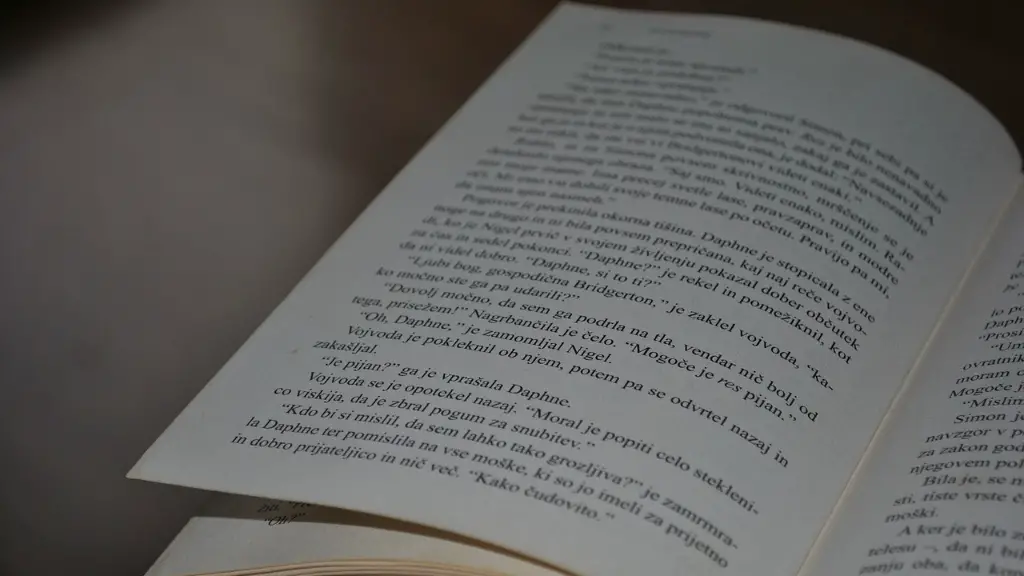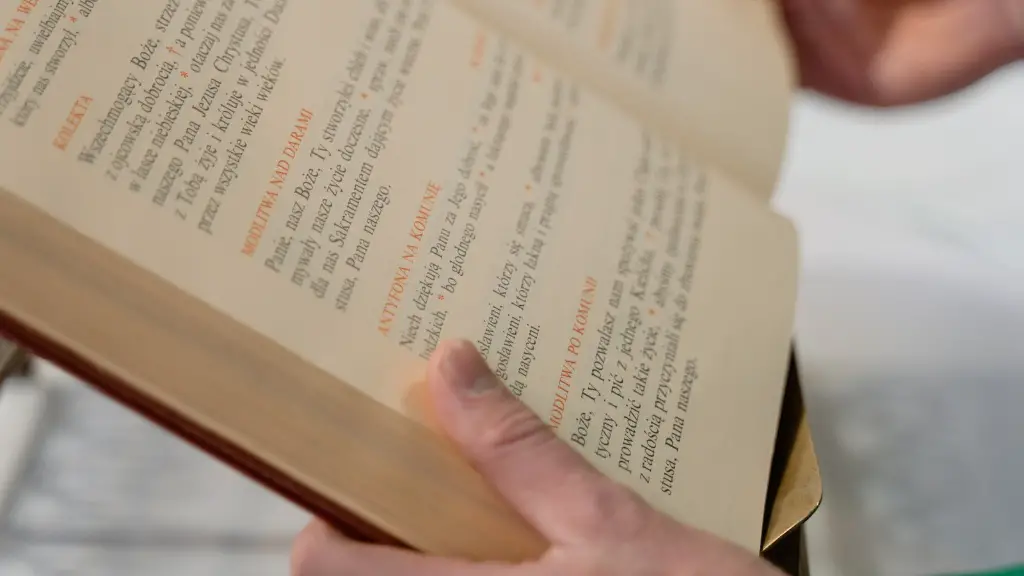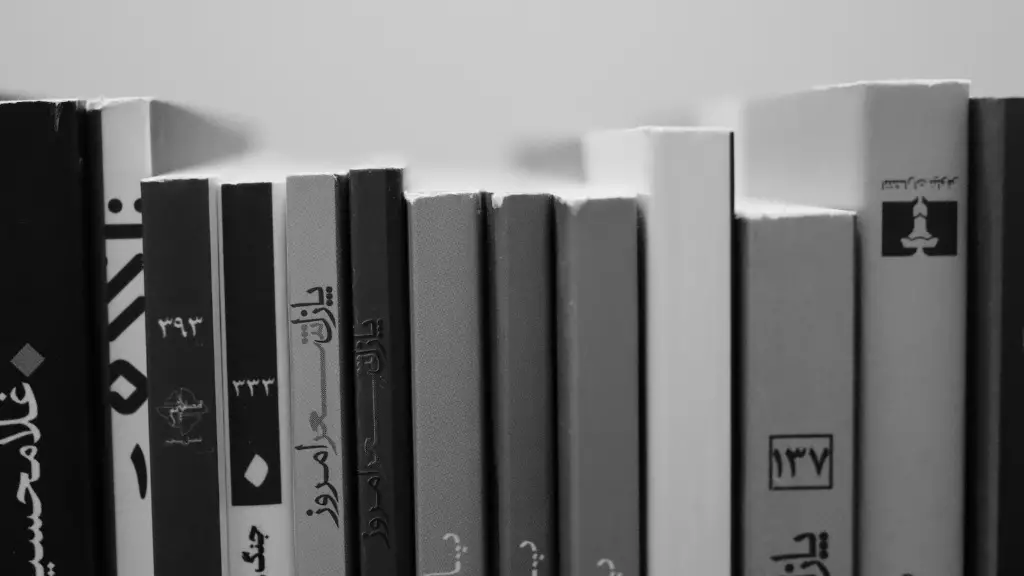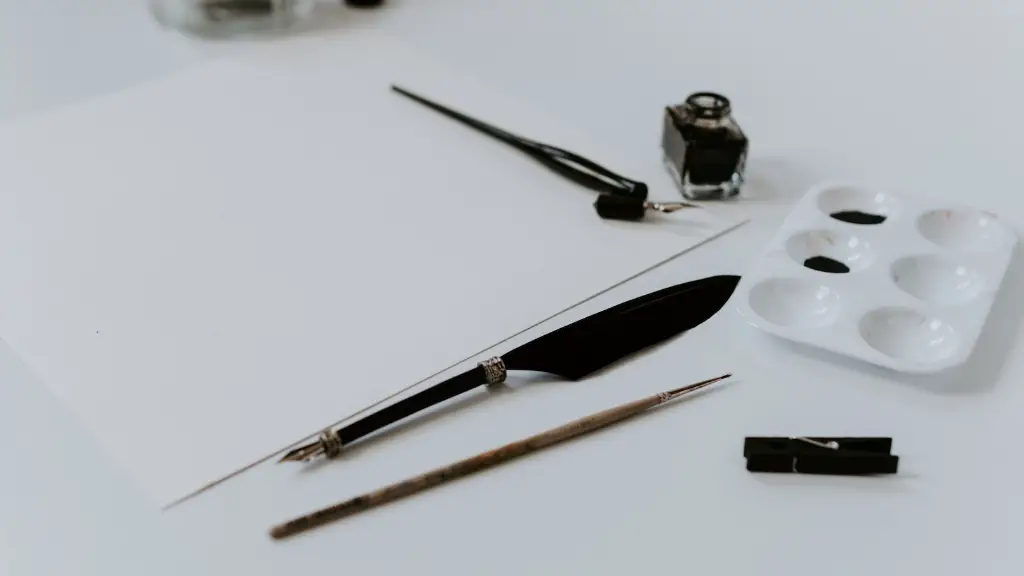What is a Meter in Poetry?
Meter is the rhythmic pattern used in poetry, commonly known as the “beat”. A meter is a regular pattern of stressed and unstressed syllables that form the “feet” of a line of poetry. The placement of these syllables creates a musical quality that is characteristic of specific types of poetry. A poem’s meter is determined by the number of syllables and their sequence in each line. Although the visual representation of meter is often left out of poetry, it has a powerful effect on how it is read and understood.
Types of Meter
Meter can be divided into two major categories: quantitative meter and accentual meter. Quantitative meter focuses on the number of syllables in a line while accentual meter looks at the pattern of stressed and unstressed syllables. Some of the more common forms of quantitative meter include iambic pentameter, dactylic hexameter and anapestic tetrameter. Examples of accentual meter include trochaic and amphibrachic meter.
Iambic Pentameter
The most common quantitative meter is iambic pentameter, which is often used in English poetry. It consists of five iambs per line. An iamb is a two-syllabic foot in which the first syllable is unstressed, and the second syllable is stressed. For example, “under” or “arrive” are both examples of iambs. This pattern gives the poem a steady rhythmic pulse, which is one reason why it is so commonly used.
Effects of Meter
Meter has the power to evoke a sense of energy or emotion in a poem. Meter can evoke powerful images, create a rhythmic pulse that can be both calming and exciting, and provide a rhythmical structure to a poem. Because of its impact on a poem, meter can help define the tone of a poem and influence the way readers interact with it. Additionally, meter can be used as a tool for emphasizing particular words or phrases, allowing poets to lend more depth to their writing.
Syntactic Structures and Meter
The use of meter in poetry often involves careful consideration of syntax. When a poem consists of multiple lines, each line must retain its own rhythmic pattern, and therefore may be limited in the number of words or types of syntactic structures it can contain. When a poet wants to introduce new information, they must use sentences and clauses that contain several concepts in one expression or develop several related yet distinct expressions that showcase the poem’s meter.
Meter in Other Forms of Poetry
Meter is not limited to traditional poetry. In some forms of poetry, such as rap and hip-hop, meter and syllabic structure are very important. Rap artists often use an eight-bar rhyme pattern in which two rhymes are repeated four times. This structure creates an intense rhythmic pattern that is characteristic of rap music. Additionally, metric structure affects the delivery of the lines and can give the music a powerful emotional and artistic component.
Meters in Dramatic Poetry
Meter is a key component of dramatic poetry. The meter used in this form of poetry varies greatly depending on the genre or the time period in which it was written. For example, the ancient Greek theater often used the iambic pentameter, while Elizabethan theater commonly used the blank iambic pentameter. Additionally, Old French drama often employed the chant royal, which was a lengthy poetic composition based on the five-line stanza format outlined in Geoffrey de Vinsauf’s Poetria Nova. Meter, in this sense, served as a device for emphasizing and dramatizing the spoken dialogue.
Meter in Prose
Meter is also used in prose writing. In particular, meter is often seen in the structure of a sentence, as the placement of certain words and punctuation can create its own beat. Sentences with short words and short phrases tend to be more energetic, while longer phrases give the sentence a slower, more deliberate rhythm. Many of the rules of poetic meter apply to prose meter as well, allowing writers to create a sense of rhythm and emphasis even when writing in a more straightforward narrative style.
Rhetorical Devices and Music
Meter is also used as a rhetorical device in both poetry and prose. By using meter to emphasize particular words or phrases, writers are able to add an extra layer of meaning to their work. Additionally, the use of meter in speech allows words to better flow togetheras they are being spoken, similar to the way music flows together. Poets, writers and speakers often use meter to make their words more memorable or powerful.
Rhyme and Meter
Rhyme and meter often go hand in hand. Rhyme creates a musical effect that allows readers to understand and remember words and phrases more easily. Meter serves as the foundation for this effect, as the rhythm of the poem allows the rhymes to be more effective. Additionally, rhyme can help give the poem a musical quality. By strategically placing the rhymes within the poem, the poet is better able to control the sound and structure of the lines.
Meter and Figurative Language
Meter is an important part of figurative language in both poetry and prose. Metrical devices such as alliteration and assonance can create patterns of sound that are pleasing to the ear and can help give shape and structure to a poem. Additionally, certain meters can help evoke specific emotions—for instance, iambic pentameter is often used when writing about love or sorrow due to its pleasing rhythmic quality.
Meter and Meaning
Meter is an essential element when understanding the meaning of a poem. It allows readers to interpret the poem’s meaning differently by hearing the words spoken with a different rhythm. Meter also helps to reinforce the poem’s overall message, as certain meters can evoke certain emotions and create a feeling of tension or excitement. Ultimately, meter serves an integral role in creating the poem’s overall meaning and impact.



